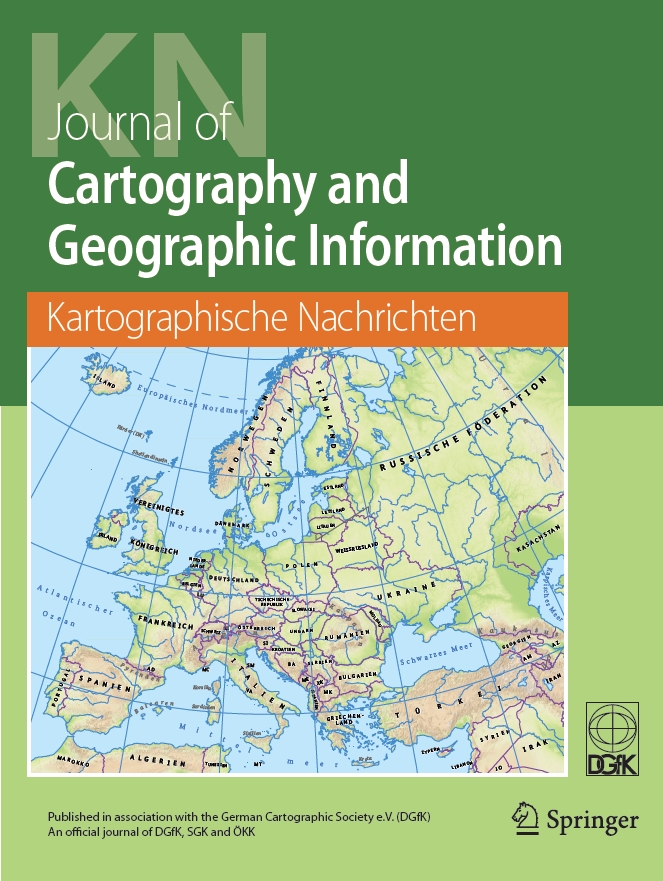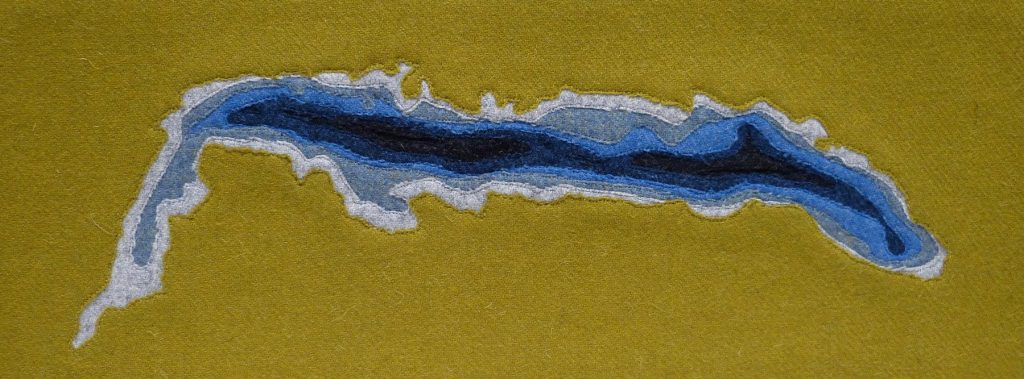Portrait
Die Deutsche Gesellschaft für Kartographie e. V. (DGfK) - Gesellschaft für Kartographie und Geomatik - wurde 1950 in Bielefeld gegründet. Als gemeinnützige, wirtschaftlich unabhängige und politisch neutrale Fachgesellschaft vertritt sie national und international die Interessen der deutschen Kartographie. Ihre 1500 Mitglieder sind als Personen, Unternehmen, Institutionen oder Organisationen auf dem Gebiet der Kartographie und des Geoinformationswesens beruflich tätig oder zeichnen sich durch ihr besonderes Interesse an kartographischen Produkten aus. Unter ihnen finden sich Geographen und Geodäten, Informatiker und Geomatiker, Medienfachleute und Historiker. Sie alle verstehen sich im weitesten Sinne als Kartographen, die produzierend, als Führungskräfte oder wissenschaftlich tätig sind. Bedingt durch ihre fachlich breit gefächerte Mitgliederstruktur versteht sich die DGfK als Schnittstelle zwischen Wirtschaft, Verwaltung und Wissenschaft.
Die DGfK definiert Kartographie als Wissenschaft und Technik der Darstellung und Kommunikation raum-zeitlicher Informationen. In ihren Kommissionen verfolgt sie die wissenschaftliche und technische Entwicklung der Kartographie, trägt zur Erarbeitung von Lösungs- und Verfahrensansätzen bei und vermittelt diese ihren Mitgliedern. Im jährlich ausgerichteten Deutschen Kartographie Kongress und in teils regelmäßig stattfindenden Vortragsveranstaltungen, Workshops und Symposien pflegt die DGfK den fachlichen Austausch, informiert die Öffentlichkeit und fördert die Aus- und Weiterbildung. Nicht zuletzt setzt sich die DGfK mit der Geschichte der Kartographie auseinander und trägt zur Pflege des kartographischen Kulturgutes bei.

Auf der INTERGEO ist die DGfK, wie hier 2012, regelmäßig
mit einem Stand im Verbändepark vertreten.

Über das kartographische Geschehen in Wissenschaft und Praxis informiert die DGfK ihre Mitglieder und die Fachöffentlichkeit durch die Herausgabe der zweimonatlich erscheinenden KN Kartographische Nachrichten - Journal of Cartography and Geographic Information, sowie durch weitere Veröffentlichungen wie das Kartographische Taschenbuch und die unregelmäßig erscheinende Reihe Kartographische Schriften. Am internationalen kartographischen Geschehen nimmt die DGfK über ihre Mitgliedschaft in der Internationalen Kartographischen Vereinigung (IKV) teil.
Traditionell pflegt die DGfK enge Beziehungen zu den Fachgesellschaften der Nachbarländer, insbesondere Österreichs und der Schweiz, die das von der DGfK herausgegebene Journal Kartographische Nachrichten als ihr Verbandsorgan führen.

It is ok, to be a cartographer
At the International Cartographic Conference 2013 in Dresden the president of the International Cartographic Association, Georg Gartner, gave prominence to his opening address by saying the following:
I argued, that there is quite some confusion about the status, relevance and importance of Cartography. While the term „map“ is most popular and sees its arrival in big business debates amongst major software companies, in mass market applications related to new technologies such as mobile devices or in the mass media, the term cartography provokes the question „Is that still around?“ It is more likely that those, who are involved in making maps nowadays call themselves not a cartographer but rather something else.
I argued further, that the enormous relevance of the ever growing amount of geodata and geoinformation can only be „unleashed“ when it becomes accessible to human users. To make geodata and geoinformation accessible to human users means to try to package it in a way that it can be perceived, „digested“ and used, thus simply communicated. I argued further, that this was and is exactly the aim and contribution of cartography. Maps are most successful in being the interface between spatial data and human users. They order information based on the spatial attribute, they engage to explore, they can be entertaining, they help to become spatially aware, they tell stories, they help me to position myself in a particular topic by showing entities and their relations.
I argued that without this contribution we would be somehow „spatially blind.“ Maps enable us to answer space-related questions. Maps can be used to support spatial behaviour. I argued further, that in order to enable spatial thinking, spatial planning, spatial reasoning or decision making cartography is needed. I pointed out that maps are the most successful and powerful instruments to enable spatial awareness.
By looking at those arguments as a way to describe the relevance of cartography as a discipline and the enormous drive and popularity cartography gets from applying most contemporary technologies I argued in my take-away messages:
- Cartography is relevant
- Cartography is attractive
- Cartography is most contemporary
If my arguments are true, then there is no need to step back or hide away as a cartographer but rather the other way around. It is of high importance that cartography and cartographers are actively contributing their skills, knowledge, methods and research to the geospatial domains.
I therefore argued, that It is ok, to be a Cartographer!
(Source: https://icaci.org/presidents-blog-its-ok-to-be-a-cartographer/)







